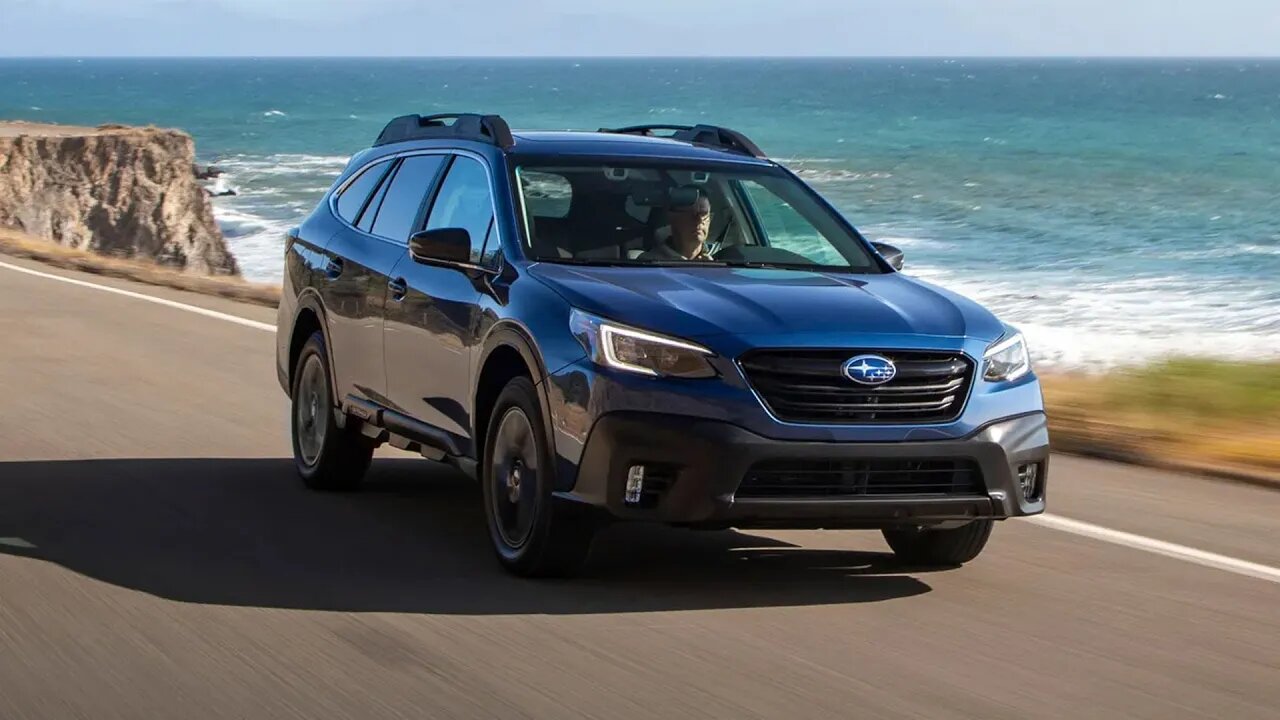Premium Only Content

2021 Subaru Outback Walkaround
Overview
Subaru's successful formula with the 2021 Outback station wagon has been imitated by several of its rivals, but none of those copycats has managed to get as much traction. The slightly lifted suspension and ruggedized plastic lower body panels have both been found on other wagons. However, this one happens to be an Editors' Choice winner. The Outback's appeal lies in its adventure-ready appearance, standard all-wheel drive, and cargo-friendly cabin. Two four-cylinder engines are offered—a nonturbo 2.5-liter and a zestier turbocharged 2.4-liter. While the Outback's handling won't thrill a driving enthusiast, its ride is smooth and quiet, and its interior is roomy—a combination that should satisfy families and adventure seekers traveling to their next challenge.
What's New for 2021?
The Outback was redesigned from the ground up for the 2020 model year, so for 2021 Subaru has made only three minor changes: Adaptive headlamps, a rear-seat reminder system, and a passenger's seatbelt warning light and chime are now standard across the lineup. A Wilderness model is expected to debut soon which will add additional rugged styling details and extra ground clearance.
Pricing and Which One to Buy
Base $27,845
Premium $30,095
Limited $34,645
Onyx Edition XT $36,195
Wilderness $38,000 (est)
Touring $40,995
We think the Premium model has the best complement of standard and optional features for the price. While it's only available with the standard 182-hp four-cylinder, upgrading to the turbocharged 260-hp engine costs at least $6000. We don't think the turbo's improved acceleration and 800 pounds of extra towing capacity are worth the money. Instead, the Outback Premium comes standard with an 11.6-inch touchscreen, a 4G LTE mobile hotspot, heated front seats, a power-adjustable driver's seat, more USB ports, and options that aren't offered on the base model. Among those, we'd opt for the more affordable package that adds blind-spot monitoring, a hands-free power liftgate, and passive entry with push-button start.
Engine, Transmission, and Performance
The Outback lineup features a pair of flat-four-cylinder engines: a 182-hp 2.5-liter is standard and a 260-hp turbocharged 2.4-liter is optional. Both mate to a continuously variable automatic transmission (CVT) that mimics an eight-speed gearbox to mitigate annoying engine drone. Of course, all Outbacks have standard all-wheel drive, which is a Subaru staple (except for the rear-drive BRZ sports coupe). The standard powertrain provides humble motivation, but the Outback we tested had unremarkable acceleration and lazy transmission behavior. While the turbocharged version was considerably quicker, it was plagued by the same recalcitrant transmission. Still, most Outback owners are more concerned with ride quality and limited off-road capability. With 8.7 inches of ground clearance and dependable all-wheel drive, the wagon is able to navigate inclement weather and even rutted roads. Likewise, its suspension provides a docile ride, and its steering is accurate and easy to manage on the highway. However, either version of the Outback lacks any athleticism, which might surprise WRX fans upgrading to the more practical wagon. The wagon's standard engine also can tow 2700 pounds, while the turbocharged version can pull 3500.
Fuel Economy and Real-World MPG
The EPA estimates the standard Outback will earn 26 mpg in the city and 33 on the highway. The turbocharged version sees a significant dip in efficiency, with ratings of 23 mpg city and 30 highway. In contrast, its Legacy counterpart has thriftier powertrains. Its base engine is expected to earn 27/35 mpg city/highway and the turbocharged option has estimates of 24/32 mpg city/highway. We tested an Outback with each of these engines on our 200-mile real-world highway-fuel-economy route, and they returned an identical 28 mpg. The sedan with the turbocharged four-cylinder got 34 mpg in that same test.
Interior, Comfort, and Cargo
The Outback shares much of its interior with the Legacy, and both have comfortable accommodations and quality materials. While Subaru's cabin design borders on boring, it's functional and has a high seating height. Aside from the base model, every Outback has dual-zone climate control, heated front seats, a power-adjustable driver's seat, and copious USB ports. More upscale features such as a heated steering wheel, ventilated front seats, a power-adjustable front-passenger seat, and heated rear seats are available on fancier trim levels. The Outback also has a spacious back seat that offers an extra 1.4 inches of legroom compared with the previous generation. Its rear cargo area provides 33 cubic feet of space; in our testing, it held 11 carry-on suitcases with the back seat up and 23 bags with it folded flat. The Legacy accepted eight and 22 suitcases, respectively, in the same tests.
#WikiCar
#SubaruOutback
-
 7:31
7:31
A collection of the best cars in the world
2 years ago2023 Toyota 4Runner Overview
499 -
 LIVE
LIVE
FreshandFit
3 hours agoAre You Smarter Than A 5th Grader?
23,323 watching -
 LIVE
LIVE
Badlands Media
11 hours agoDevolution Power Hour Ep. 358
9,642 watching -
 2:55:04
2:55:04
TimcastIRL
5 hours agoFBI & GOP EXPOSE "Coup" Against TRUMP, Democrat Operative FELONIES Covered Up | Timcast IRL
211K53 -
 1:05:22
1:05:22
Man in America
12 hours ago5G + mRNA = Remote-Controlled Humanity w/ Dr. Henry Ealy
36.2K33 -
 2:36:23
2:36:23
Geeks + Gamers
4 hours agoGEEKS + GAMERS PLAY- MARIO KART!! SWITCH 2 HYPE!
16.2K1 -
 1:37:44
1:37:44
Badlands Media
23 hours agoAltered State S. 3 Ep. 30: Cannabis Crackdowns, Tech Tyranny, and the Battle for the Border
64.5K6 -
 LIVE
LIVE
Meisters of Madness
8 hours agoElden Ring - Erdtree Wrap-up
233 watching -
 9:22:21
9:22:21
Bitcoin Magazine
2 days agoThe Bitcoin Conference 2025 | Day 2 Livestream
179K24 -
 LIVE
LIVE
Eternal_Spartan
3 hours agoLive - Eternal_Spartan | Doom: The Dark Ages | Come Join the Best Rumble Community There Is!!
255 watching